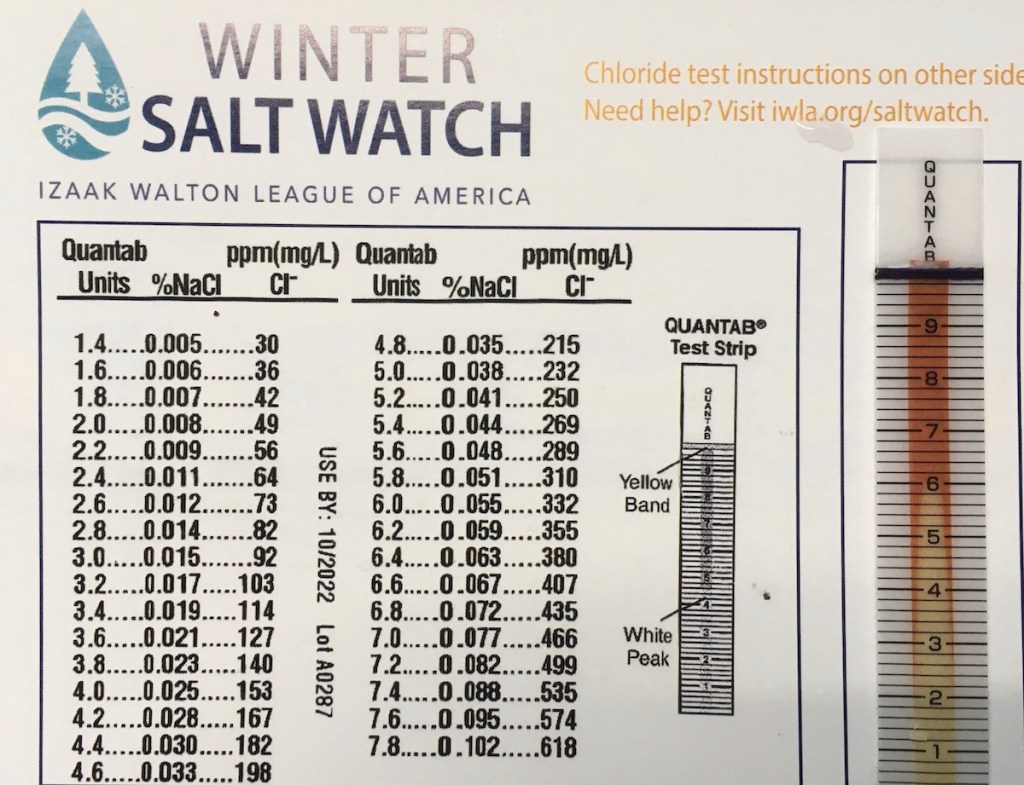[Update 24 hours later: kudos to whoever — Public Works, individuals, businesses — shoveled up all that salt, as it now is gone and will not drain into Plum Run after all!]
All this sodium chloride is headed for Plum Run, unless someone shovels it up for future use. And this, ironically, at a time when the Borough is expending a lot of effort to prevent Plum Run’s banks from eroding and is financing rain gardens to reduce runoff and attendant chemicals from entering streams.
The same day, the chloride level in Plum Run at the SW corner of the Borough measured 310ppm.
According to Molly Hunt et al., “Chlorides in Fresh Water“:
“In Rhode Island, the Department of Environmental Management (DEM) has set acceptable chloride concentration exposure limits for freshwater organisms at 860 ppm to prevent acute (immediate) exposure effects and at 230 ppm to prevent chronic (long-term) exposure effects. For drinking water, DEM has set a maximum contaminant level of 250 ppm chloride, which is the point at which water starts to taste salty.”
So 310 ppm is not good. What’s the problem? According to Jeremy Hinsdale, “How Road Salt Harms the Environment“:
“Chloride is toxic to aquatic life, and even low concentrations can produce harmful effects in freshwater ecosystems. High chloride levels in water can inhibit aquatic species’ growth and reproduction, impact food sources, and disrupt osmoregulation in amphibians. Some 40 percent of urban streams in the U.S. already have chloride levels that exceed the safe guidelines for aquatic life.”
“Runoff containing road salt can also cause oxygen depletion in bodies of water. ‘If runoff containing salt goes into a freshwater lake or stream, it will tend to sink towards the bottom, creating a dense layer that can inhibit gas exchange with the overlying water,’ says Juhl. ‘This can lead to the development of low oxygen conditions that are detrimental to fish and other aquatic organisms.’”
Do you want to measure your own local stream’s chloride content ? See Isaak Walton League: Protect streams from salt! for how to get a free kit. Here’s the measurement from Plum Run (the chloride level is shown by the peak of the yellowish area in the sensor on the right of the photo):



It’s excessive on East Chestnut between N. Penn and N. Adams. Makes me sick that the Borough is doing this wth all their “safe, green, clean” talk.
LikeLike
Pingback: The Trouble with Salt | West Chester Green Team